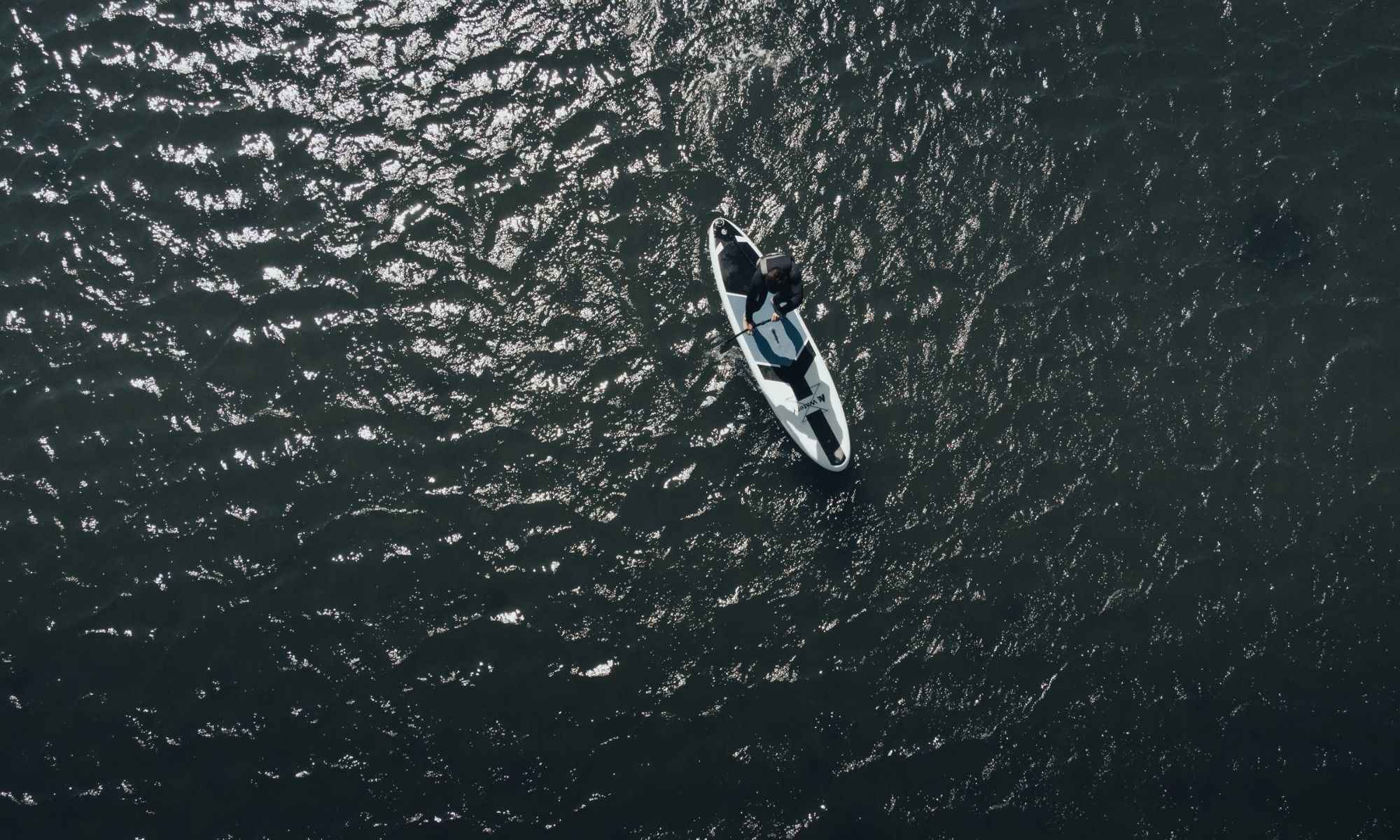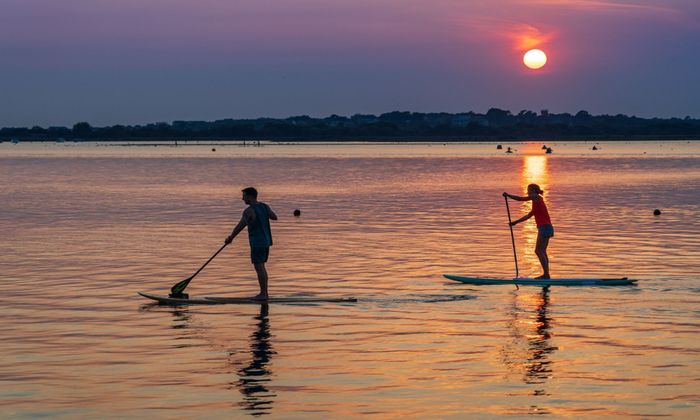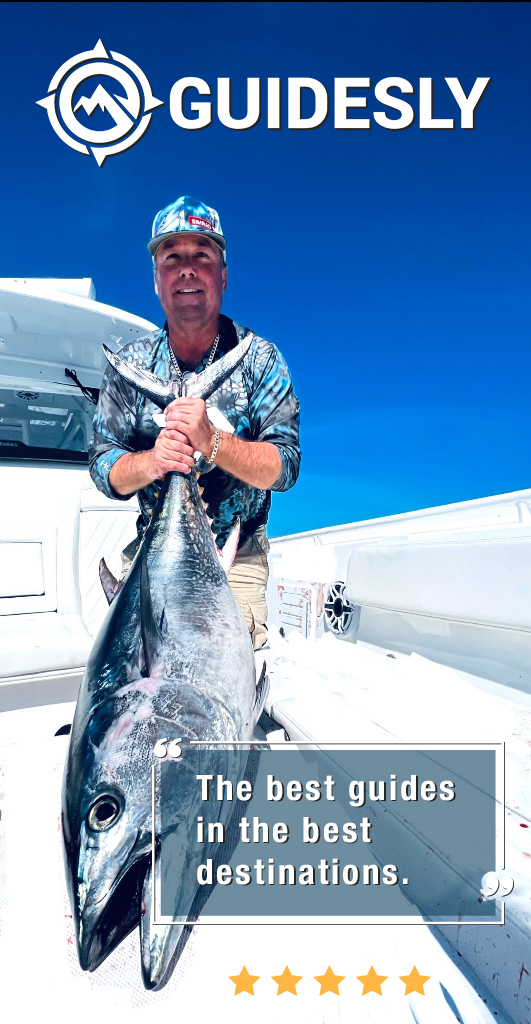Reasons to Fish From the Paddle Board
This article introduces paddle board fishing as a new alternative to motor boats and kayaks.

When it comes to fishing, a high-speed motorboat comes to mind. They are fast, durable, spacious and are all-around preferred by most anglers. However, for aspiring anglers looking to gain experience, buying a new boat may not be the most appealing choice. What if there was a cheaper alternative to using a motorboat?
In this article, we’re here to introduce paddle board fishing, one of the new and trendy ways anglers have been reeling in fish from across the United States!
Top 5 reasons to Fish from the Paddle Board
1. Budget-friendly
Let’s face it. Fishing isn’t a cheap hobby. Not everyone can charter a boat, let alone buy a private one, so buying a paddle board might help you lessen the load on your bank account. A good paddle board will only cost an average of $700. That’s already around the range of a 5-hour charter. Another thing it will save costs on is fuel consumption. That alone can save you hundreds, if not thousands, of dollars in the long run.

While its size pales in comparison to a motor boat leaving for a more cramped situation, on the bright side, transporting paddle boards will be cheaper without the need to buy extra equipment for transporting boats. In fact, there are two types of paddle boards that can be used for fishing, inflatable and hardboard. Inflatables allow for more weight to be brought on board and can be deflated in order to fit in any car. Hardboards are surfboard-like and can handle rougher waters better than inflatables. However, it might be harder to fit them in regular cars.
2. Eco-friendly

The only fuel anglers will need when using a paddle board is a strong arm. In comparison, motor boats generally use a variety of gas, from unleaded to diesel, as fuel. According to the United States Environmental Protection Agency (EPA), these fuels are one of the leading contributors to the production of ground-level ozone which negatively affects vegetation and is also a contributor to acid rain. While a couple hundred personal fishing boats may not be the root cause for pollution, taking care of the fishing spots that we all enjoy shows respect not only to the location but also fishing as a craft. Paddle boards are an environmentally-friendly alternative that makes sure you leave the lake as clean as you got there. It also makes sure anglers on prolonged fishing trips don’t inhale exhaust from diesel engines, which can have long-lasting health implications.
3. Healthy
Paddle boarding has its modern roots set as a sport originating from Hawaii in the 1940s. The sport was first conceptualized by John Ah Choy, a local Hawaiian fisherman surfer -who, as he got older, couldn’t go up and down the surfboard the way he used to. He figured that using a paddle while propelling the board in order to catch waves has the same effect as how a surfer would get down on the board and swim. His sons mimicked his style and the rest is history. Paddle boarding has gone on to be used in different ways such as touring, racing, and fishing.
Needless to say, paddleboard fishing requires a healthy amount of effort getting from one fishing spot to the next. Anglers looking to reel in a big prize, need to be in tip-top shape. Paddle boarding helps in strengthening ones’ core muscles, legs, arms, and even good cardio and endurance training. It is also a good way to train your balance. And despite looking like a heavy full-body workout, it is still considered low-impact, which means that even though paddle boarding requires the use of major muscles in the body, the actions required to propel the board aren’t enough to strain them.
4. Maneuverability/ Functionality
Using a paddleboard when navigating backwaters is much more flexible than using other boats. As an angler, you get a better vantage point standing up on the board than paddling on a kayak. Paddling on a board also means that its flat surface gives anglers better visibility in the surrounding water. It is also easier to control a paddle board than a motor boat. Being able to easily make your way through small crevices where popular game fish like largemouth bass and catfish reside is a must.
Otherwise, anglers who aren’t sold on using paddle boards because of the need to constantly balance themselves while using it will be pleased to know that these boards are easily customizable. They can be equipped with inflatable supports that will make balancing much easier. They can also be outfitted with a variety of different tools and equipment like tackle bags, rod holders, storage boxes, and even a detachable seat. Paddle boards are flexible enough that anglers can pick and choose what they need for a fishing trip.

5. Perfect for Trolling and Drift Fishing
As a maneuverable vessel, paddle boards can be great for those who practice certain techniques like trolling or drift fishing. Both techniques are commonly used when fishing on a slowly moving boat. Trolling is when an angler uses multiple baits attached to the rear side of a slowly moving boat. Most trolling lures are in the shape of a fish in order to mimic injured prey. Anglers are more likely to catch sturgeon, bass, trout, and salmon when using this technique.
Drift fishing on the other hand, simply allows an angler to fish while a boat wades through the water, effectively covering more fishing ground and sending you through the natural water current. When drift fishing, anglers should expect to catch mackerel (chub and Atlantic), flounder (summer and southern), and even blue catfish.
Both of these techniques are perfect for paddle board fishing as they’re designed for calmer waters. Compared to motorboats, they’re much more silent, which will help a lot when approaching schools of fish that are easy to spook.
Pick Your Poison
While paddle boarding in the Mississippi bayous remains a dream (for obvious reasons), these trendy new fishing vessels have at least made a case for alternatives to motorboats and kayaks. In the end, it’s all about the uniqueness of each vessel and what an angler prefers the most. However, as the paddle boarding community as a whole continues to grow, we may see more advancements in equipment and material, leading to a brighter future in terms of fishing.



